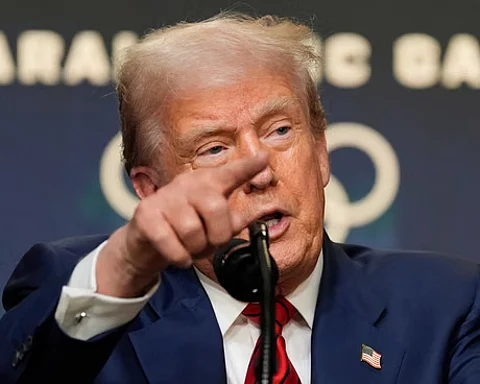

US President Donald Trump has signed an executive order imposing an additional 25 percent tariff on Indian imports in response to New Delhi’s continued purchases of Russian oil.
The move will raise the total tariff on Indian goods entering the United States to 50 percent—one of the highest rates currently levied by the US on any trading partner.
According to the executive order, the new tariff rate will come into effect in 21 days, on August 27.
India’s Ministry of External Affairs responded on Wednesday, reiterating its long-standing position on energy imports from Russia and calling the new measure “unfair, unjustified and unreasonable”.
“It is therefore extremely unfortunate that the US should choose to impose additional tariffs on India for actions that several other countries are also taking in their own national interest,” the ministry said in a statement.
“India will take all actions necessary to protect its national interests,” it added.
President Trump had earlier warned of increased tariffs, accusing India of being indifferent to the war in Ukraine. “India doesn’t care how many people in Ukraine are being killed by the Russian War Machine,” he said.
The White House later issued a statement citing the “ongoing threat” posed by the Russian Federation’s actions in Ukraine to US national security and foreign policy, calling for “stronger measures to address the national emergency”.
It added that India’s continued imports of Russian oil undermine US efforts to counter Moscow’s aggression and warned that other countries could also face similar scrutiny.
“The United States will determine which other countries are importing Russian oil and recommend further actions to the president as needed,” the statement said.
Russia’s biggest exports are oil and gas, with major buyers including China, India and Turkey.
The announcement follows a visit to Moscow by Trump’s special envoy Steve Witkoff on Wednesday, where he held talks aimed at negotiating peace between Russia and Ukraine.
New Delhi had previously dismissed Trump's tariff threats as "unjustified and unreasonable". In an earlier statement, foreign ministry spokesperson Randhir Jaiswal noted that the US had itself encouraged India to buy Russian gas at the outset of the Ukraine conflict “to help stabilise global energy markets”.
Jaiswal added that India had turned to Russia after traditional energy suppliers diverted shipments to Europe in the wake of the war.
The tariff move signals Trump’s willingness to penalise even close allies and major trading partners over their ties with Russia. Observers say it could be a precursor to broader sanctions, especially if new measures promised by the White House go into effect after Friday’s deadline, which includes potential 100 percent tariffs on Russian oil buyers.
This is not the first instance of the Trump administration enforcing secondary sanctions—similar measures have previously been used to punish buyers of Venezuelan oil.
India, which counts the US as its largest trading partner, has long criticised Washington for maintaining commercial ties with Russia even while pressuring other countries to cut theirs. In 2024, the US traded an estimated $3.5 billion worth of goods with Russia, despite sanctions and tariffs.
President Trump and Prime Minister Narendra Modi have publicly projected a strong personal rapport in the past, attending joint rallies and exchanging praise. However, the latest developments highlight widening differences between the two governments on strategic and economic matters.